The average lifter follows a traditional gym program, which is made up of body part splits that start with chest day every Monday. This style of program was designed with the goal of becoming bigger and stronger in the gym, but little thought in the way of gaining functional strength. What does one do to shift gears and create a plan of action for, well, more action?
A big, rippling set of pecs and highly-peaked biceps are sights to behold, certainly, but what good are they if you’re unable to lift, hold, and haul everyday things? Are you a do-it-yourselfer who wants to build a fence, push a wheelbarrow, or lift bags of mulch or cement? If so, more practical ways to program your training are in order.
This isn’t to say that you need to ditch every principle of training you ever knew. In fact, if you look back far enough into their practice, they hold up quite well. Years ago, lifters weren’t just hard bodies; they also demonstrated feats of strength, endurance, and pure, raw resilience. Along with huge legs and hardy backs, the old-time strongmen had the ability to lift massive loads overhead. But their training methods fell out of fashion over the years, as our population became more obsessed with aesthetics over function.
Fast-forward to today, and the functional philosophy is back. Lifting, holding, pushing, pulling and throwing are back in the limelight. Developing the entire body synergistically will build overall strength and capability that traditional body part splits have a tough time doing.
The purpose of the program I’ll show you today is to bridge the gap between aesthetic and functional training. Everybody wants the ability to do more with their body, but looking good is a nice side effect.
Fix What Needs Fixing
But first, some old business. Let’s look at some of the common weak links in need of a remedy. This list isn’t exhaustive, but it does highlight the major violators.
- The Posterior Chain: The posterior chain includes all the muscles that run down the back of the body, including the yoke (trapezius and posterior deltoids); all back musculature (latissimus dorsi, teres major and minor, and rhomboids); lumbar; gluteus minimus, maximus, and medius; and biceps femoris. Most traditional programs create an imbalance between the posterior chain and the anterior muscles. For example, overworked anterior areas such as pectoralis majors combine with underworked lats to pull the shoulders forward, concaving the chest. Weak hams and glutes let the pelvis fall out of alignment, leave the low back vulnerable, and hinder the development of the quads, to say nothing of limiting your performance on squats and other lower leg moves.
- Unilateral Imbalances: A program that includes only bilateral movements will eventually cause a shift in strength to one dominant side of the body over the other. Unilateral training (or training one side independently from the other) will enable you to shore up the problem and bring balance to your limb and core strength. It will also help prevent future injuries to one side and actually strengthen some bilateral lifts.
- Lower Body Mobility: This includes increasing the range of motion within your hips and ankles, but also refers to performing movements with optimal ranges of motion during training. Shallow squats and pump-like motions will not only limit your strength curve, but also invite injury.
- Overhead Shoulder Stability: Overhead presses are yet another victim of short, choppy reps. Full ranges of motion in any style of press will provide more shoulder stability, power, and strength that will spill over into other critical movements such as rows and pull-ups.
- Bodyweight Strength: Bodyweight training is the ultimate test of strength. If you cannot manipulate and control your own body against gravity, you cannot create functional, real-world strength with traditional weight training.
- Core: The heavy use of machines lets your core take a backseat for development. Aside from direct abdominal work, your core is better activated by challenging exercises that require you to balance and stabilize under load.
Training Concepts and Ground Rules
Each day in this program, you will utilize an array of training variables that will challenge you in ways you may not have experienced before.
- Power: High speed strength. Think moving the load quickly, such as with Olympic lifts.
- Strength: Low speed strength. This is strength in its traditional form. Think of basic weight training.
- Hypertrophy: Increases in muscle size through volume of work.
- Muscle endurance: Your ability to undergo repeated bouts and recover efficiently.
- Speed and agility: Your ability to accelerate, change direction and then accelerate once again.
- Cardiovascular endurance: For the most part, you will forego the traditional form of low intensity steady state (LISS) cardio exercise, in favor of high intensity interval training (HIIT).
- Mobility and stretching: Increase your range of motion and also strengthen throughout that motion.
- Prehab: Foam rolling, dynamic warm-ups, and priming the body by increasing blood flow and heart rate.
Next, some ground rules:
- Give the program at least four to six weeks.
- Each training session will begin with some prehab and dynamic warm ups/stretches.
- Pay very close attention to rest periods. Each session is designed to last about one hour.
- Focus on form and technique.
- Each session will include most training variables, so expect shifts in intensity and ability.
The program includes four main workouts, each to be performed once a week. There is also an optional weekend bodyweight conditioning day for those who want more challenge. Your week may look something like this:
- Monday: Day 1 – Strength
- Tuesday: Day 2 – Hypertrophy and Muscular Endurance
- Wednesday: Off
- Thursday: Day 3 – Power
- Friday: Day 4 – Speed and Agility
- Saturday: Day 5 – Optional full body conditioning
- Sunday: Off
The Tactical Physique Training Plan
Why tactical? This program was originally designed for military, police and firefighters who need to build and maintain a certain level of functionality to carry out the tasks of their jobs. They may be required to carry heavy equipment for extended periods of time, and will certainly require toughness to do their job effectively. This program easily translates to the average joe, preparing and conditioning them to do the same.
Foam rolling
Try to include some sort on foam rolling into your pre-workout routines. Hit certain areas such as hips, quads, hams, lats, and shoulders.
Dynamic Warm Up and Mobility
The following will be performed prior to each training session. You may increase or decrease the volume as needed. Perform all moves with little rest for one round:
- Push ups: 20 reps
- Burpees: 10 reps
- Walking lunges (long stride): 20 paces
- Lying ab windshield wipers: 10 reps each side
- Jump squats: 10 reps
- Inverted rows: 10 reps
- Side lunges: 10 reps each side
Post Training
Be sure to perform a comprehensive stretching routine focusing on the specific muscles stressed during the workout, and any other areas affected by the training session.
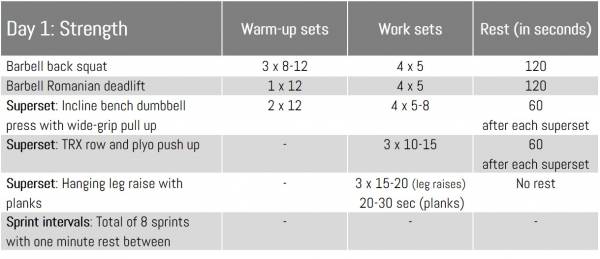
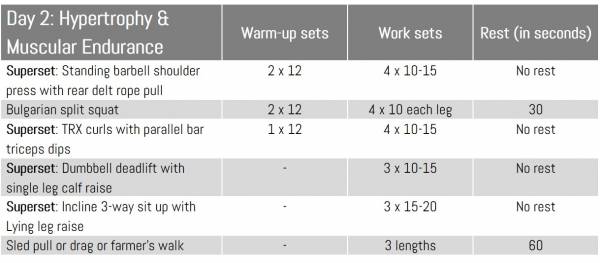
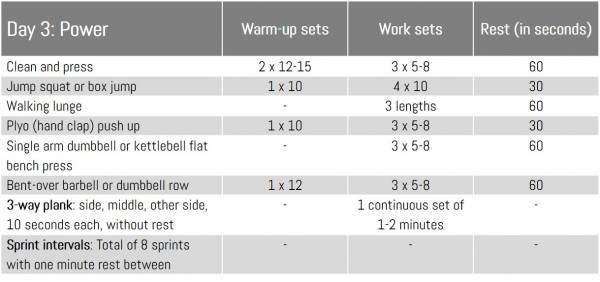
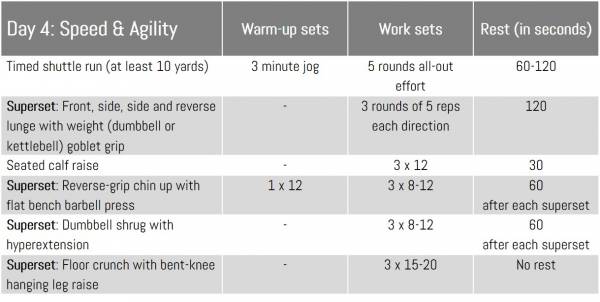
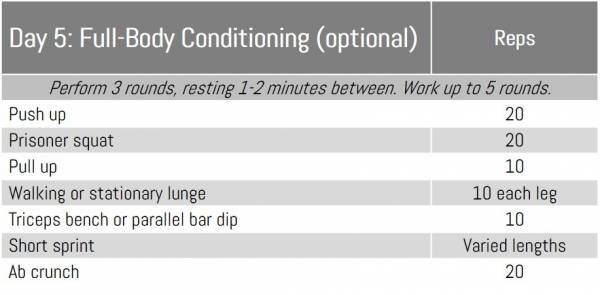
Train to be useful:






